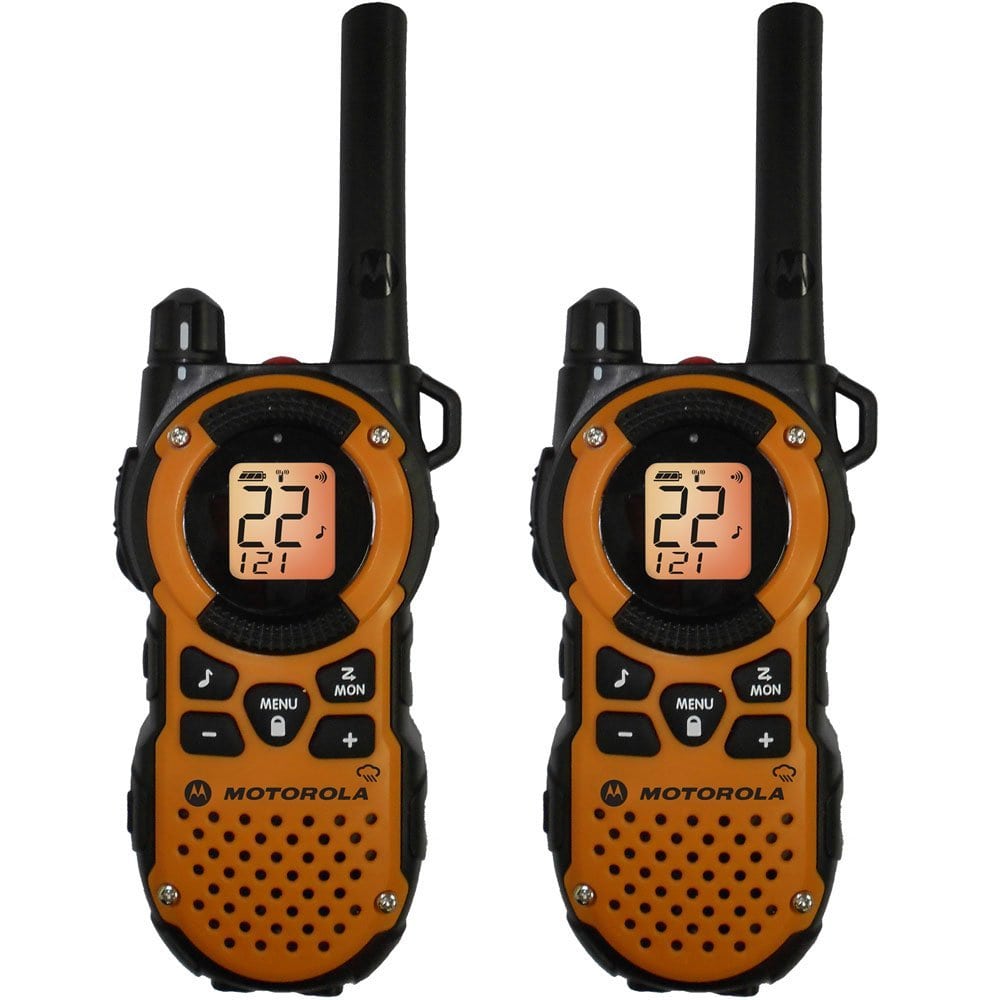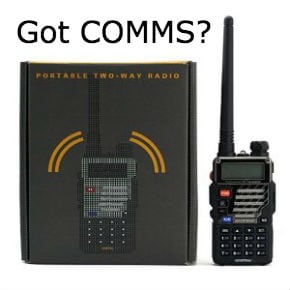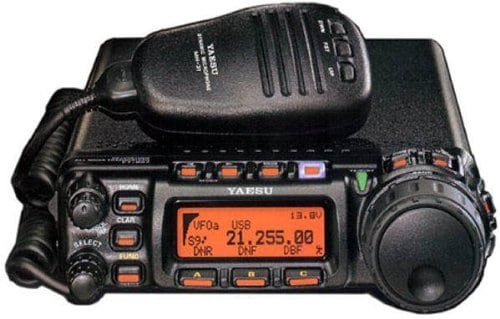When I started preparing several years ago, I was focused on the obvious…have guns, ammo, food, water, shelter and the training to make the most of it. I was this way for at least a year and a half before I started focusing on communications as a preparedness category. As I started to demystify the realm of off grid communications, I could not believe why I had not gotten into this field sooner as it was so critically important.
Unfortunately, many preppers have followed this same path; that is, they think HAM radio and other COMMS equipment is too techy and expensive to pursue. While there is a cost involved, let me help demystify communications, as well as show you the communication gear I have purchased.
2-Way “Walky-Talky”
Two way radios are the most common and inexpensive off the shelf product for communications. I have a pair of the waterproof Motorola MT350Rs in the picture, and the only reason I bought them was because I know members of my family were not going to pursue a HAM radio license. While these do not support long range communication, I do bring these with us when we are out and about in case we go to separate stores in the mall (or something of that nature). If an emergency were to happen and the cell phone towers are overloaded, I still have a means to talk to my family and set a rendezvous point. Here are the PROs & CONs:
PROs
- Cheap
- Locally available at many retail outlet
- Generally do not require a license to operate unless it uses GMRS (General Mobile Radio Service) frequencies which require an FCC license.
CONs
- Many manufacturers boast 35-50 mile range. In reality, you are only going to get this range if you are on the ocean from boat to boat, or going from mountain peak to mountain peak. A much more realistic range is 2-3 miles.
- They generally cannot use repeater towers. These towers receive signals and re-transmit them with higher power and greater distance. Repeater towers are very common for HAM radio use.
- Since these are very common off the shelf products and generally do not require a license, many more people have these than HAM radios. With a set number of channels pre-programmed to specific frequencies, you do run the risk of having people more easily listen in on your conversations. (FYI, those privacy tones do not conceal your transmissions. It simply blocks other people’s transmissions that do not have the sub-audible privacy tone).
Citizen’s Band (CB) Radio
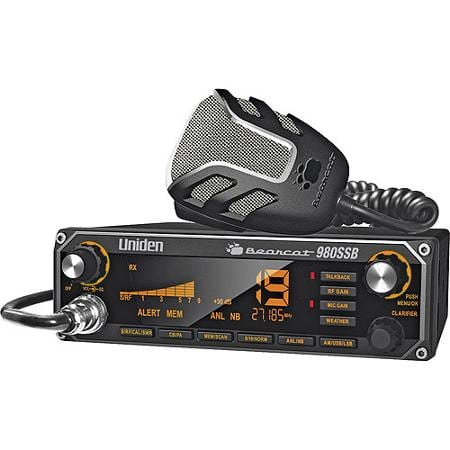 CB radio is most notably used with truckers on the highway. I have one myself, but I believe its use in preparedness situations is limited.
CB radio is most notably used with truckers on the highway. I have one myself, but I believe its use in preparedness situations is limited.
PROs
- These are very easy to set up and use.
- You do not need a license
- They are cheap and mobile
- It’s a direct line of communication to what’s happening on the road in your proximity.
CONs
- If you’ve ever owned a CB radio, you’ll find that 75+% of the communications are trash talk. Not only that, but many of the people have very thick slang, and it’s often difficult to get intelligible or useful communications. In addition, some truckers use amplifiers to strengthen their signal and it can blast your radio with distortion and noise. No offense to truckers, but this is how I see it.
- CB radios work on AM modulation, similar to AM broadcasting. The range is again limited to a couple of miles. There are Single Side Band (SSB – a more efficient modulation) radios that can transmit further, but I have not found many people that own or use these. The CB radio I own is the Uniden Bearcat 980ssb which is pictured. Other CB units are much cheaper, but this one has the SSB modulation for long distances which adds to the price.
- Again, you have a limited spectrum of 40 channels. As with the walky-talky’s, expect everyone and their neighbor to be listening in on your conversation.
Short Wave Radio
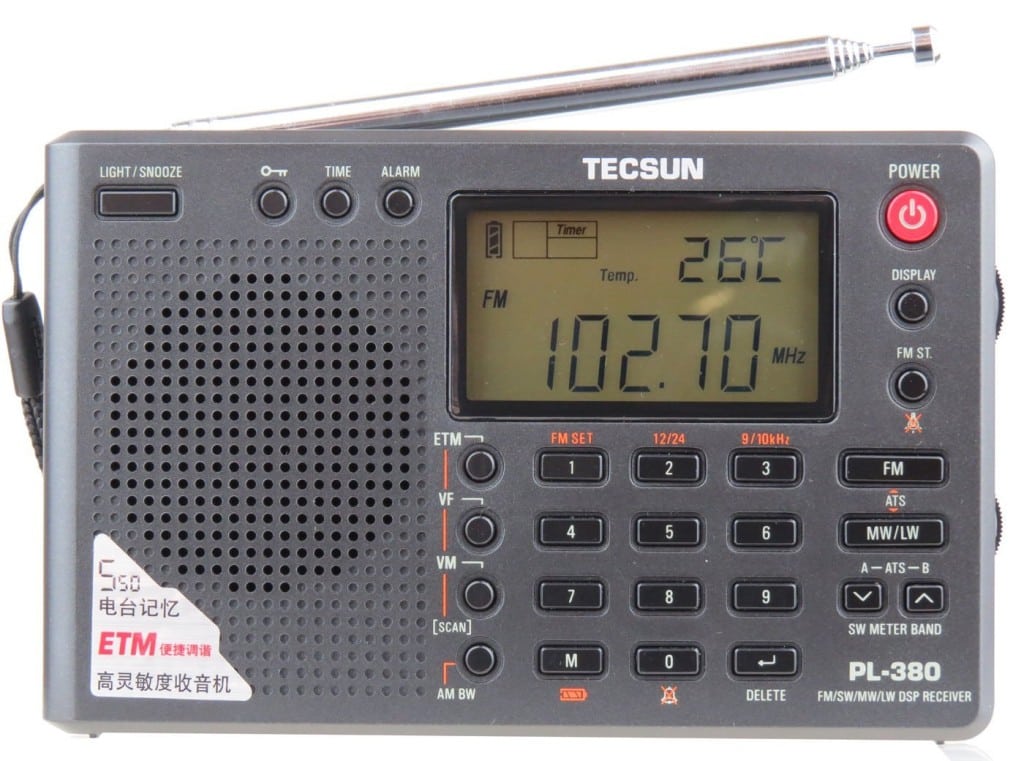 A shortwave radio is a specially designed receiver that receives shortwave radio stations from countries far away from where you live and are on frequencies from about 3Mhz to 30Mhz. Some are located within the U.S., but most are located in many other countries around the world. If you live in the U.S., you can easily listen to stations broadcasting from foreign countries like, Radio Australia, Radio Cuba, Swiss Radio International, Deutsche Welle (Germany), Radio Netherlands, Voice of Free China, Radio China International, Radio Japan and many other countries if you have a good shortwave receiver! This is an excellent resource to read up on what short wave radio is.
A shortwave radio is a specially designed receiver that receives shortwave radio stations from countries far away from where you live and are on frequencies from about 3Mhz to 30Mhz. Some are located within the U.S., but most are located in many other countries around the world. If you live in the U.S., you can easily listen to stations broadcasting from foreign countries like, Radio Australia, Radio Cuba, Swiss Radio International, Deutsche Welle (Germany), Radio Netherlands, Voice of Free China, Radio China International, Radio Japan and many other countries if you have a good shortwave receiver! This is an excellent resource to read up on what short wave radio is.
PROS
- You can listen to news from around the world, however keep in mind that short wave radio has been used to spread propaganda as well as truth. These radios can also pick up amateur radio, aviation bands (including military), marine bands and more!
- They are inexpensive (~$50) devices. The radio I have is the TECSUN PL-380 as pictured.
CONS
- Much of the traffic is coming from established news stations. So, you may be hearing false propaganda or watered down information.
- You can only listen, but not transmit.
Radio Scanner
Radio scanners are incredible for the prepper who wants to listen to anything from police, fire/EMS, public works, HAM radio, aviation bands, or anything else for that matter! I just got my first scanner a couple of weeks ago and it was by far one of the best communication devices I’ve purchased. With Radio Shack going out of business, I got the Radioshack Pro-651 over 50% off. They are currently on amazon for $265 vs. the original price of $400.
PROs
- Scanners can scan most all local communications. Using RadioReference.com, you can select your state and county and see that almost all frequencies are made public and are scannable. I have military, federal, police, fire/EMS, ham radio, CB, aviation bands, and many other frequencies programmed in to mine. If you just want to be a fly on the wall and don’t think you will be transmitting much, a scanner is for you!
- Scanners scan through channels incredibly fast…faster than any “scan” feature that you have on other radios.
CONs
- They are more expensive. While analog scanners are cheaper, most departments are using digital encoded communications. An average price for a “Digital Trunking Scanner” is going to be around $350 or more.
- Without someone to teach you, they can be confusing to program. However, once you understand the principles, programming is SUPER EASY! It’s a shame that some manufacturer’s try to charge you $100+ for programming when it only takes 5 minutes to upload a pre-programmed frequency list. To help you all out, I will post an article in the future and link back to this article to teach you how to program.
- Once you have it programmed, you need to get over the learning curve of understanding police codes. There are many signal codes, 10 series codes (10-4) and other numbers that will sound foreign to you while scanning. In order to interpret what is being said, you need to get into the habit of listening frequently and aligning the codes with what is on the internet. FYI- counties differ in how they use codes, so it may not be synonymous between counties and states.
Handheld (HT) Ham Radio
The cheap and reliable Baofeng UV-5R models, at only around $35 per unit are perfect for local communications! They are arguably as cheap as those two-way radios found in retail markets. However, these radios have SIGNIFICANT advantages to the 2-ways. Bookmark THIS ARTICLE that I wrote on how to easily get the necessary equipment and HAM radio license.
PROs
- They transmit at higher wattages than 2-ways. Two-ways that you purchase from retail markets that use FRS (family radio service) frequencies can only legally transmit @ 1.5 watts. Handheld amateur radios can transmit at much higher watts. For example, the Baofeng UV-5R can transmit at 2.5-8 watts depending on setting and model. More watts is one factor in achieving greater range.
- You can tap into repeater towers. While an HT to HT transmission might be a little better than 2-ways at 3-4 miles, using repeater tower frequencies can let you transmit and receive from 50 miles or more! Repeater towers act much like cell phone towers that re-transmit your signal over larger distances.
- You are not limited to “channels” but entire stretches of frequencies. Although it is illegal to encrypt amateur radio transmissions, your transmissions are somewhat more concealed. It’s sort of like standing out in the open public square, but amongst 100’s of other individuals. While a CB or 2-way radio only has access to 25 to 40 frequencies, an amateur radio hand held has access to hundreds! To be even more concealed, you can transmit on one frequency and receive on another. Your counterpart uses the same frequencies, but in reverse order. The product of this trick is that people scanning the bands can only hear one side of the conversation unless they find the two individual frequencies that you are using.
CONs
- You need a license to operate. It’s a first level license called “technician”. This article tells you how to get your license easy and for free.
- I think these are easier to program than scanners, however, they do have their own learning curve. Manually programming these units can be very cumbersome, but there is free software available to help you program them from your computer. Again, I detail the software download and other materials for you in THIS ARTICLE.
- Not necessarily a con, but recognize that these handhelds are generally only applicable for local communications. If you want to broaden your communications out to different states, regions of the country or even global communications, you will need to start spending more money.
- If the repeater towers go down for any reason, you can no longer communicate the 50+ miles you were used to. Ensure you have a contingency plan.
Mobile / Portable / Base Station Amateur Radio
When you start getting out of handhelds for amateur radio, you start to get into a massive world of radios, antennas, towers, computer software, data packets, morse code, gadgets, and do-dads. This is why amateur radio is a hobby unto itself as it can get really deep, technical and expensive. While preppers may not get into the techy/geeky-ness of this level of amateur radio, these units provide a very important function – you can talk anywhere from local, to regional (100-200 miles), to across the country and even across the world with no middle-man infrastructure!
While the local and regional communications are probably your most important COMMs, there are preparedness networks across the country that operate weekly to disseminate information to preppers. They are AMRRON (American Redoubt Radio Operators Network and TAPRN (The American Preparedness Radio Network). Having a radio like the Yaesu-857D and appropriate antenna allows you to access these preparedness networks. I and several other preppers own the Yaesu-857D as it’s a very common choice among preppers. It can be used as a base station at your home, a mobile device in your car, or a portable setup in your bug out bag. Technology has come a long way and they have packed a lot into this unit.
PROs
- With many models, you can use these for local, regional or global communications.
- As with the Yaesu-857D, some can be used as a base station, mobile, and portable setup.
- You do not need to rely on repeaters. You can communicate from point A to B without a middle man. For reference, the only communications coming out of hurricane Katrina were HF radio communications using devices like the Yaesu-857D. This is the true off grid communications option.
- Upgrading and expansion is limitless. If you want to get into morse code, sending emails over radio waves, or more, you can expand on by buying more add-on equipment.
CONs
- You need to get a 2nd level license for operation of these devices. It’s called “General”.
- You need to learn a good bit more about radio communications in order to be effective; types of antennas, configurations of antennas, time and seasonal affects on communications, etc.
- You’ll spend a lot more money! The Yaesu 857D is around $850-950 and that does not include battery source, antennas, tuners, etc.
Summary
If you have not done anything with communication up to this point, my recommendation would be that you analyze your current situation. Ask yourself questions like:
- Do I need local, regional, and/or global communications?
- Do I need to receive only or will I need to transmit as well?
- If I need to transmit, who will I be talking to and where are they located?
- How much time do I have to invest in learning?
- How much money do I want to spend?
Based on my observations, many preppers started off in communications using walky-talky’s, cheap handheld baofeng radios for amateur radio, and scanners. If you only intend on listening, get yourself a scanner and short wave radio. If you think you might be transmitting, start off with the $35 Baofeng UV-5R+ and get your technician license. From there, you can build on your HAM radio experience and determine whether or not you want to progress to higher level equipment.
Hope this article helps! If it did, I appreciate votes for On Point Preparedness at TopPrepperWebsites.com


